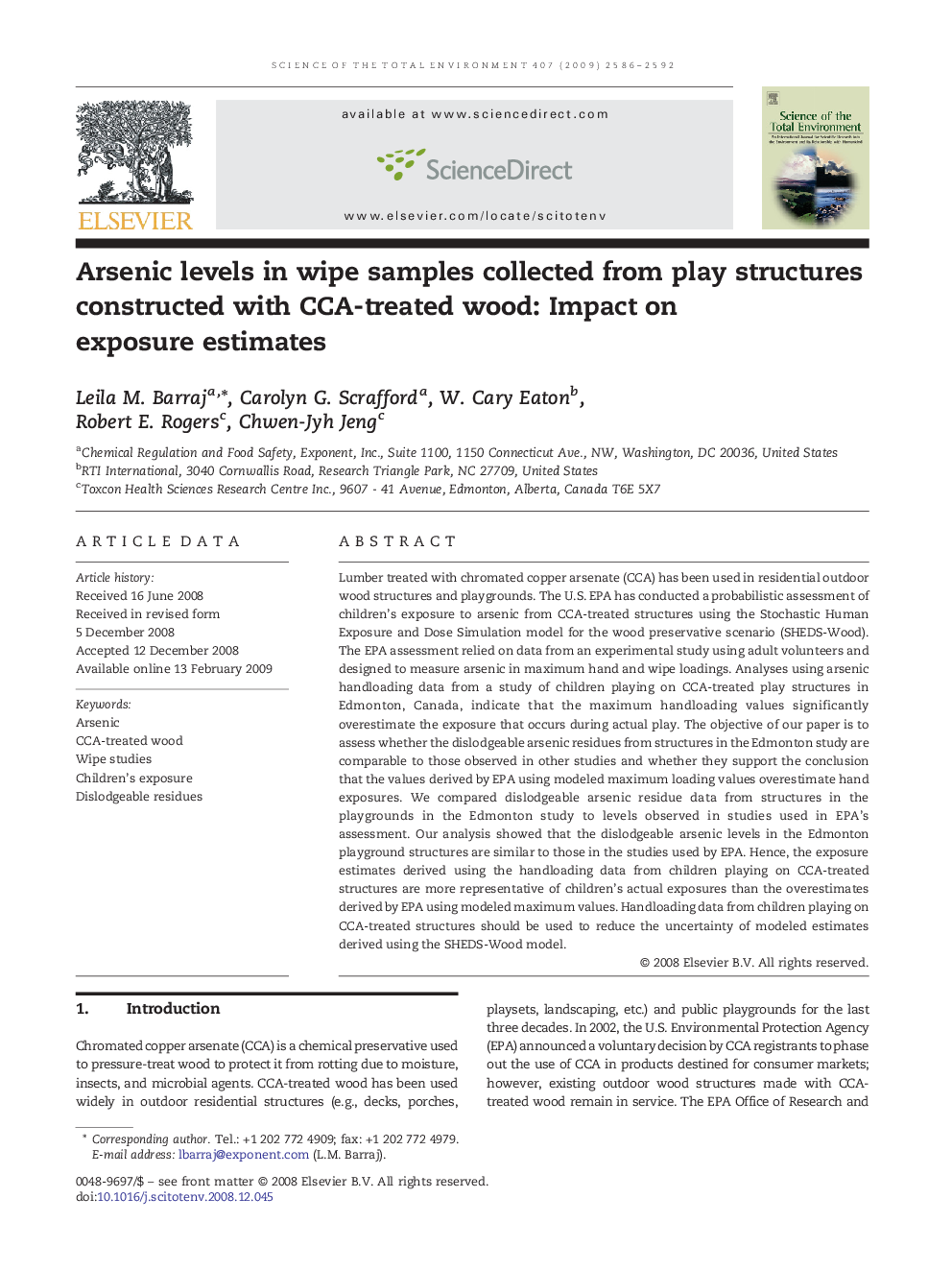| Article ID | Journal | Published Year | Pages | File Type |
|---|---|---|---|---|
| 4431944 | Science of The Total Environment | 2009 | 7 Pages |
Lumber treated with chromated copper arsenate (CCA) has been used in residential outdoor wood structures and playgrounds. The U.S. EPA has conducted a probabilistic assessment of children's exposure to arsenic from CCA-treated structures using the Stochastic Human Exposure and Dose Simulation model for the wood preservative scenario (SHEDS-Wood). The EPA assessment relied on data from an experimental study using adult volunteers and designed to measure arsenic in maximum hand and wipe loadings. Analyses using arsenic handloading data from a study of children playing on CCA-treated play structures in Edmonton, Canada, indicate that the maximum handloading values significantly overestimate the exposure that occurs during actual play. The objective of our paper is to assess whether the dislodgeable arsenic residues from structures in the Edmonton study are comparable to those observed in other studies and whether they support the conclusion that the values derived by EPA using modeled maximum loading values overestimate hand exposures. We compared dislodgeable arsenic residue data from structures in the playgrounds in the Edmonton study to levels observed in studies used in EPA's assessment. Our analysis showed that the dislodgeable arsenic levels in the Edmonton playground structures are similar to those in the studies used by EPA. Hence, the exposure estimates derived using the handloading data from children playing on CCA-treated structures are more representative of children's actual exposures than the overestimates derived by EPA using modeled maximum values. Handloading data from children playing on CCA-treated structures should be used to reduce the uncertainty of modeled estimates derived using the SHEDS-Wood model.
